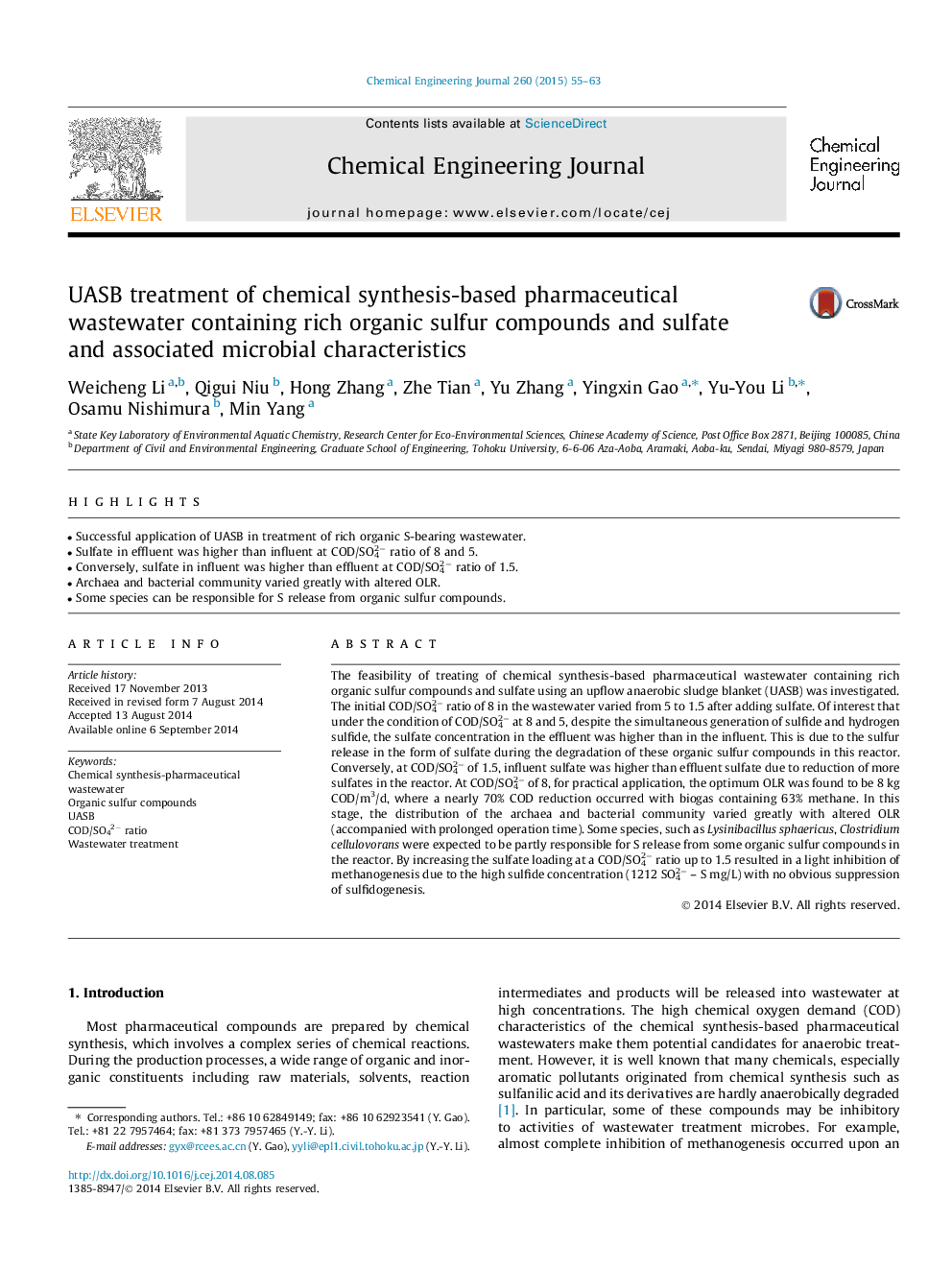| کد مقاله | کد نشریه | سال انتشار | مقاله انگلیسی | نسخه تمام متن |
|---|---|---|---|---|
| 146729 | 456378 | 2015 | 9 صفحه PDF | دانلود رایگان |

• Successful application of UASB in treatment of rich organic S-bearing wastewater.
• Sulfate in effluent was higher than influent at COD/SO42− ratio of 8 and 5.
• Conversely, sulfate in influent was higher than effluent at COD/SO42− ratio of 1.5.
• Archaea and bacterial community varied greatly with altered OLR.
• Some species can be responsible for S release from organic sulfur compounds.
The feasibility of treating of chemical synthesis-based pharmaceutical wastewater containing rich organic sulfur compounds and sulfate using an upflow anaerobic sludge blanket (UASB) was investigated. The initial COD/SO42− ratio of 8 in the wastewater varied from 5 to 1.5 after adding sulfate. Of interest that under the condition of COD/SO42− at 8 and 5, despite the simultaneous generation of sulfide and hydrogen sulfide, the sulfate concentration in the effluent was higher than in the influent. This is due to the sulfur release in the form of sulfate during the degradation of these organic sulfur compounds in this reactor. Conversely, at COD/SO42− of 1.5, influent sulfate was higher than effluent sulfate due to reduction of more sulfates in the reactor. At COD/SO42− of 8, for practical application, the optimum OLR was found to be 8 kg COD/m3/d, where a nearly 70% COD reduction occurred with biogas containing 63% methane. In this stage, the distribution of the archaea and bacterial community varied greatly with altered OLR (accompanied with prolonged operation time). Some species, such as Lysinibacillus sphaericus, Clostridium cellulovorans were expected to be partly responsible for S release from some organic sulfur compounds in the reactor. By increasing the sulfate loading at a COD/SO42− ratio up to 1.5 resulted in a light inhibition of methanogenesis due to the high sulfide concentration (1212 SO42− – S mg/L) with no obvious suppression of sulfidogenesis.
Journal: Chemical Engineering Journal - Volume 260, 15 January 2015, Pages 55–63